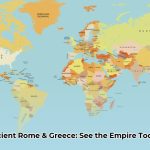Ever wonder about the woman behind Iran’s Supreme Leader? Mansoureh Khojasteh Bagherzadeh, wife of Ali Khamenei, presents a fascinating enigma, largely due to her intensely private existence. For a more detailed biography, see this resource. This article seeks to consolidate the limited publicly accessible information regarding her life, examining her origins and potential role within Iran. We will honestly address the challenges in researching her, acknowledge what remains unknown, and explore the reasons behind this scarcity of information.
Mansoureh Khojasteh Bagherzadeh: A Life Shrouded in Mystery
Mansoureh Khojasteh Bagherzadeh, married to Iran’s Supreme Leader Ayatollah Ali Khamenei, is a figure cloaked in secrecy. Her birth year is often cited as 1947, but definitive confirmation remains elusive. This lack of accessible information underscores the power dynamics, privacy norms, and meticulously managed narrative prevalent within Iran’s political sphere. Constructing even a partial understanding necessitates careful evaluation of confirmed details, speculations, and the significant constraints in securing dependable information about Iranian political figures.
A Life Deliberately Kept Private
Information regarding Mrs. Bagherzadeh is strikingly limited. Photographs are scarce, and comprehensive biographies are virtually non-existent. This extreme privacy is remarkable, particularly when contrasted with the often-public lives of spouses of global leaders. Several factors could contribute to this, including a deliberate strategy to safeguard her family or a broader pattern of information control intrinsic to Iran’s political system.
Originating from a prominent family in Mashhad, her father was a successful businessman, and a brother held a high-ranking position within the IRIB (Islamic Republic of Iran Broadcasting). This background implies a life rooted in religious conservatism and significant social connections. Her marriage to Ali Khamenei in 1965 solidified her position within Iranian power structures, with the couple reportedly having six children. However, beyond this foundational framework, concrete details remain difficult to verify.
The Obstacles to Truth: Information Control in Iran
Investigating Mrs. Bagherzadeh’s life presents unique obstacles. Stringent governmental control over information makes open-source research exceedingly challenging. Numerous online accounts offer supposed details, but verifying accuracy is nearly impossible. Even seemingly reliable sources often lack proper documentation, highlighting inherent limitations in studying figures operating within such opaque systems.
Confirmed and Unconfirmed Details About Iranian First Ladies
It is certain that Mrs. Bagherzadeh’s life is characterized by a conscious commitment to privacy, a stark contrast to many other spouses of powerful global leaders. Public appearances, if any, are unlikely to be well-documented. The limited number of images available online suggests a deliberate effort to remain out of the public eye.
Significant gaps persist. Information about her education is virtually non-existent, and her personal religious beliefs remain unknown. Claims of charitable work are unverified. This deliberate ambiguity complicates understanding her life fully, prompting the question: Is the lack of information intentional, designed to further protect her privacy?
Distinguishing Fact from Conjecture
Speculating on Mrs. Bagherzadeh’s influence within Iran’s political system is tempting, but doing so without concrete evidence risks inaccuracies. The absence of evidence does not negate the possibility of certain events, but speculation without solid evidence is inadvisable.
A Measured Approach: Privacy’s Role in Iranian Politics
Comprehending Mrs. Bagherzadeh’s life requires meticulous research, focusing on verifiable facts while avoiding unsubstantiated claims. Comparative analysis with similar figures in comparable political systems might offer valuable insights. Ultimately, understanding her life hinges on recognizing the constraints imposed by a tightly controlled information environment.
The lack of information itself becomes telling, revealing a deliberate choice to maintain privacy. Mansoureh Khojasteh Bagherzadeh’s story highlights the complexities of power, privacy, and the delicate balance between public role and private life. It remains an unfolding narrative, and continued research may eventually reveal more.
Finding Reliable Information on Mansoureh Khojasteh Bagherzadeh
Key Takeaways:
- Mansoureh Khojasteh Bagherzadeh maintains a highly private life, resulting in limited accessible information.
- Information verification requires meticulous source evaluation; trustworthy sources are essential.
- The opaque nature of Iranian politics complicates research; expect limited details.
- Focusing on verifiable facts is vital; avoid speculation.
- Understanding the Iranian political context is crucial for interpreting available data.
A Life Shrouded in Secrecy Surrounding Iranian Political Figures
Mansoureh Khojasteh Bagherzadeh, wife of Iran’s Supreme Leader Ali Khamenei, remains largely unknown. This stems from the secrecy surrounding Iran’s political elite. Navigating this veil of secrecy to find reliable information requires a strategic approach.
Navigating the Information Landscape: Critical Analysis of Iranian Sources
Finding reliable information on Mrs. Bagherzadeh presents unique hurdles. The Iranian government tightly controls information, particularly regarding its leadership, making unbiased, independently verified information scarce.
Strategies for Fact-Finding and Information Verification
- Prioritize Reputable Sources: Focus on well-established international news organizations with a history of responsible reporting on Iran. Avoid sites with clear biases or those lacking transparency. Cross-referencing information is critical for improved accuracy.
- Scrutinize Information: Critically analyze details, even from reputable sources. Is evidence provided to support claims? Are there alternative interpretations? Does the source provide context, especially the Iranian cultural and political background?
- Acknowledge Information Gaps: Be prepared for limited readily available information. The absence of data is as significant as its presence when assessing information.
- Context is Essential: Understanding the political climate in Iran is paramount. Information control is commonplace and shapes the available narrative. Consult scholarly articles on Iranian politics and society to enhance understanding.
- Utilize Academic Resources: Scholarly journals and books on Iranian studies often offer more nuanced perspectives, though they might not always provide intimate biographical details, improving background knowledge.
Confirmed and Unconfirmed Aspects of Iranian Political Wives
Her marriage to Ali Khamenei occurred in 1965, and she was born in 1947. Beyond this, details remain scarce. Her life is intertwined with the influential dynamics of power in Iran. However, quantifying her direct influence remains challenging due to the lack of transparent reporting.
Research Challenges Surrounding Iranian High Society
Researching such a figure presents ethical and practical difficulties. Respecting privacy is crucial, and navigating the Iranian political system’s complexities requires caution. Any endeavor to uncover more details should always be coupled with awareness of potential legal and reputational risks.
Mansoureh Khojasteh Bagherzadeh’s Family and Connections
Key Takeaways:
- Limited public information exists about Mansoureh Khojasteh Bagherzadeh.
- Her family background in Mashhad is confirmed, including her father’s business and her brother, Hassan.
- Details about her education and professional life remain unverified.
- Claims regarding her charitable activities lack consistent corroboration.
- Her influence is largely inferred, not directly observed.
- Understanding her life requires navigating the opacity surrounding Iran’s political elite.
A Life Shrouded in Secrecy within Iran’s Elite
Mansoureh Khojasteh Bagherzadeh, wife of Iran’s Supreme Leader Ali Khamenei, remains a largely unknown figure. While her marriage and family origins in Mashhad are undisputed, much of her life story is shrouded in mystery. This lack of transparency raises questions about her formative influences and her potential role in the Iranian political landscape.
Her family background is a known quantity. She comes from a religious Persian family in Mashhad. Her father, Mohammad Esmaeil Khojaste Bagherzadeh, was a businessman. Her brother, Hassan, held a position at IRIB, the Iranian state broadcaster. These details, while offering pieces of the puzzle, still leave significant gaps.
Verifying Information: The Elusive Details
Information about her education remains scarce, with differing accounts circulating online. Similarly, specifics about her professional life, if she had one, are largely absent. Even details, such as her date of birth and height, vary across different sources. This inconsistency underscores the challenges of verifying information about the inner circle of Iran’s powerful.
Conjectures on Influence, Reality of Limited Public Information
Claims of significant influence are challenging to substantiate, given the limited publicly available data. Much of what is assumed about her role is based on circumstantial evidence and indirect associations. The opaque nature of Iranian politics makes it difficult to ascertain the extent of her involvement in decision-making processes or her impact on Iranian society.
Her Children: Details About the Khamenei Family
Mansoureh Khojasteh Bagherzadeh and Ali Khamenei have six children: Mostafa, Mojtaba, Masoud, Meysam, Boshra, and Hoda. Information available indicates that Mostafa is primarily engaged in seminary studies. Mojtaba is more visible in Iranian media and politics. Masoud and Meysam are also involved in activities related to their father’s work and legacy. Boshra and Hoda’s activities are less publicly documented.
Humanitarian Efforts and Social Contributions
Some reports suggest Mrs. Bagherzadeh has been involved in humanitarian efforts, particularly visiting families affected by the Iran-Iraq War and supporting war veterans. However, independent verification of these claims remains difficult due to limited access and the controlled flow of information within Iran.
Ethical Considerations and Responsible Research Practices
Given the sensitive nature of the subject matter and the potential risks associated with researching figures connected to the Iranian government, ethical considerations are paramount










